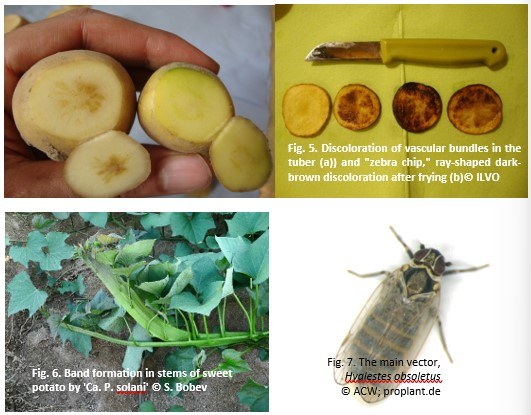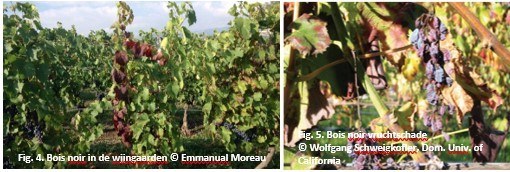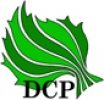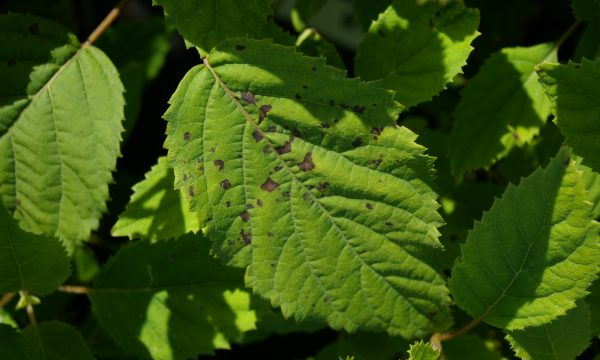News Plant pest(s): ‘Candidatus Phytoplasma solani’
The pathogen 'Candidatus Phytoplasma solani' is a small cell wall-less bacterium. A phytoplasma, therefore, more specifically of the class Mollicutes. This organism develops both in the plant phloem (this is the hard tissue of the stem or stalk) and in its insect vector. The term ‘Candidatus’ is used to refer to a group of bacteria that cannot be isolated. The bacterium is capable of infecting a very wide range of host plants, including some important cultivated crops such as potato, bell pepper, tomato, sugar beet, corn and strawberry. Numerous weeds can also become infected and act as reservoir plants.
How do you recognize an infected plant?
The pictures below show that the symptoms that appear on plants as a result of an infestation can be very diverse:
- discoloration of leaves (yellow, red, purple) (Figs. 3 & 4)
- discoloration in tubers (Fig. 6a,b)
- Leaf and stem deformities (Figs. 1, 2, 3, 6)
- growth retardation (Figs. 2, 3)
- crop losses due to fruit shriveling, among other things (Fig. 5).
Major diseases and related major economic losses caused by this bacterium are "basses richesses" in sugar beet, "maize redness" in corn, "zebra chip" in potato, "bois noir" in grape in vineyards and "stolbur" in lavender. This last name, "stolbur," is also a very commonly used term to refer to this pathogen in various host plants.


Does this constitute a major risk in Flanders?
Depending on the host plant and the region (climate), the phytosanitary risks may nevertheless be high. This is linked to the wide host plant range of this pathogen and the widespread occurrence of its vectors (cicadae; Hyalestes obsoletus (Fig. 7.), Reptalus panzeri, Anaceratagallia ribauti). In our region, and by extension throughout Europe, it is mainly the polyphagous, endemic and widespread H. obsoletus that provides the spread of this phloem-associated bacterium. However, all previously listed economically important host plants are so-called dead-end host plants because the vector (the cicada) does not fully complete its life cycle on these crops.

Thus, the risk of acquiring an infestation of epidemic proportions is rather limited and we therefore see mainly accidental outbreaks by spread from one host plant to another via feeding adults. Only lavender and a few important weed crops such as field bindweed and nettles act as full-fledged host plant reservoirs for both 'Ca. P. solani' and the vector. Transmission via tubers (e.g. in the few foci already established in potato in our country) is also very limited. A risk analysis document by Fera (UK) reported a transmission rate of only 0.5% to daughter tubers.
What can we do about it?
Control of 'Ca. P solani' foci in the field is difficult. Control of the pathogen is limited to destruction of affected plants, and vector control options are also limited, especially in the absence of suitable natural enemies. Orius predatory bugs and Chrysopa larvae are predators, but rather prefer other prey when available. Nevertheless, attention to indirect control through efficient management of the above natural reservoir weeds is certainly important.
The identified significant phytosanitary risks led to regulation of this organism in the EU. 'Ca. P. solani' is on the EPPO A2 list, and is included in the plant health legislation (EU 2019/2072) on the RNQP (regulated non quarantine pathogens) list for grape, strawberry, blueberry, potato and for plant and propagation materials. Fiches of these RNQP organisms are available on the Department of Agriculture and Fisheries website with more information on their biological properties, distribution and symptoms.
There are also two ongoing research projects (PHYLIB III and METAMINSURV), the first on epidemiological aspects of phytoplasma and 'Ca Liberibacter' diseases in potato and the second on innovative detection of phytoplasma pathogens via nanopore sequencing. There is also a project on yellowing viruses in sugar beet (VIRBICON), where it is possible that 'basses richesses' may also be detected.
De ziekteverwekker ‘Candidatus Phytoplasma solani’ is een kleine celwandloze bacterie. Een fytoplasma dus, meerbepaald van de klasse Mollicutes. Dit organisme ontwikkelt zich zowel in het plantenfloëem (dit is het harde weefsel van de stam of stengel) als in zijn insect vector. De term Candidatus wordt gebruik om een groep van niet te isoleren bacteriën aan te duiden. De bacterie is in staat om een heel brede reeks aan waardplanten te infecteren, waaronder enkele belangrijke cultuurgewassen zoals aardappel, paprika, tomaat, suikerbiet, maïs en aardbei. Ook tal van onkruiden kunnen geïnfecteerd geraken en kunnen als reservoirplant fungeren.
Hoe herken je deze plant?
Op onderstaande foto’s is te zien dat de symptomen die op de planten ontstaan als gevolg van een aantasting heel divers kunnen zijn:
- verkleuringen van blad (geel, rood, paars) (Fig. 3 & 4)
- verkleuringen in knollen (Fig. 6a,b)
- misvormingen van blad en stengel (Fig. 1, 2, 3, 6)
- groei-achterstand (Fig. 2, 3)
- oogstverliezen door onder meer het verschrompelen van de vruchten (Fig. 5).
Belangrijke ziekten en hieraan gekoppelde grote economische verliezen die deze bacterie veroorzaakt zijn “basses richesses” bij suikerbiet, “maize redness” in maïs, “zebra chip” bij aardappel, “bois noir” bij druif in de wijngaarden en “stolbur” in lavendel. Deze laatste benaming, “stolbur”, is ook een zeer algemeen gebruikte term om naar deze pathogeen te verwijzen in diverse waardplanten.


Vormt dit een groot risico in Vlaanderen?
De fytosanitaire risico’s kunnen naargelang de waardplant en de regio (klimaat) toch wel groot zijn. Dit hangt samen met de brede waardplantenreeks die deze pathogeen heeft, en het wijd verspreid voorkomen van zijn vectoren (cicadeachten; Hyalestes obsoletus (Fig. 7.), Reptalus panzeri, Anaceratagallia ribauti). In onze regio, en bij uitbreiding in gans Europa, is het voornamelijk de polyfage, inheemse en wijdverspreide H. obsoletus die voor de verspreiding zorgt van deze floëem-gebonden bacterie. Alle eerder opgesomde economisch belangrijke waardplanten zijn echter zogenaamde ‘dead-end’ waardplanten omdat de vector (de cicade) zijn levenscyclus niet volledig volbrengt op deze gewassen.

Het risico om een aantasting van epidemische omvang te krijgen is dus eerder beperkt en we zien dan ook voornamelijk accidentele haarden door verspreiding van de ene naar de andere waardplant via zich voedende adulten. Enkel lavendel en een paar belangrijke onkruidgewassen zoals akkerwinde en brandnetels fungeren als volwaardige waardplantreservoirs voor zowel ‘Ca. P. solani’ als de vector. Ook de overdracht via knollen (bv. in de weinige reeds vastgestelde haarden in aardappel in ons land) is heel beperkt. In een risicoanalysedocument van Fera (UK) is een overdrachtspercentage van slechts 0.5% naar dochterknollen vermeld.
Wat kunnen we er aan doen?
Beheersing van ‘Ca. P solani’ haarden in het veld is moeilijk. Bestrijding van de pathogeen is gelimiteerd tot de vernietiging van de aangetaste planten, en ook de mogelijkheden tot beheersing van de vectoren zijn beperkt, zeker door de afwezigheid van geschikte natuurlijke vijanden. Orius roofwantsen en Chrysopa larven zijn wel predatoren, maar verkiezen eerder andere prooien als die beschikbaar zijn. Toch is aandacht voor het onrechtstreeks bestrijden door efficiënt beheer van de bovenvermelde natuurlijke reservoironkruiden zeker belangrijk.
De geïdentificeerde belangrijke fytosanitaire risico’s hebben in de EU geleid tot een reglementering voor dit organisme. ‘Ca. P. solani’ staat op de EPPO A2 lijst, en is in de plantengezondheidswetgeving (EU 2019/2072) opgenomen op de RNQP (regulated non quarantaine pathogens) lijst voor druif, aardbei, blauwe bes, aardappel en voor plant- en vermeerderingsmaterialen. Op de website van het departement Landbouw en Visserij zijn er fiches beschikbaar van deze RNQP organismen met meer informatie over de biologische eigenschappen, verspreiding en symptomen van deze organismen.
Er lopen ook twee onderzoeksprojecten (PHYLIB III en METAMINSURV), het eerste rond epidemiologische aspecten van phytoplasma en ‘Ca Liberibacter’ ziekten in aardappel en het tweede rond innovatieve detectie van fytoplasma pathogenen via nanopore sequencing. Daarnaast is er een project rond vergelingsvirussen in suikerbiet (VIRBICON), waarbij het mogelijk is dat ook ‘basses richesses’ wordt aangetroffen.
 Diagnostic Centre for Plants
Diagnostic Centre for Plants
